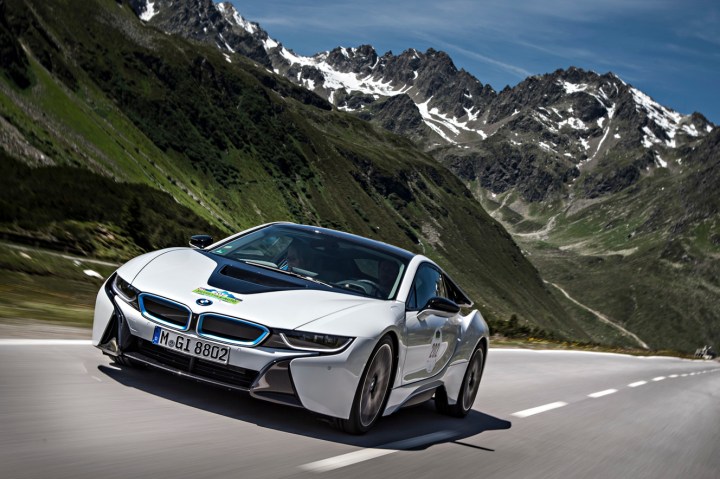
Automobile Magazine reports that BMW i is going fully electric, which means the i8 sports car will jettison its internal combustion engine for a high-revving, three-motor electric setup. Not only will this make the car more “green,” its performance should improve dramatically. Currently, the i8 makes 357 horsepower. The next model could boast as many as 750 ponies from its all-electric setup, the report states, and in addition, it’s expected to feature four-wheel steering, four-wheel drive, torque vectoring, active suspension, and an impressive 300-mile range. To say the least, the specs are shocking. The new i8 is due out in 2022 or 2023.
Read more: BMW’s 740e plug-in hybrid can do 155 mph, and 64 MPGe
The i3 is due to a replacement around 2022 as well, but BMW is reportedly mulling over three proposals for the EV’s next iteration. The first simply expands on the current generation’s carbon fiber construction, while the second leans on aluminum to save costs and the third sees a variety of materials mixed together. The city car is BMW’s best-selling i vehicle, so we expect the next version to incorporate improvements in battery manufacturing and other areas.

Before the updated i8 and i3 hit the streets, BMW hopes to debut yet another EV in late 2021. Known internally as the iNext or Project i20, the car could eventually wear an i5 or i6 badge and will likely flaunt BMW’s most advanced autonomous capabilities yet. The iNext will reportedly be built on a variation of the aluminum/steel architecture that underpins modern Bimmer sedans, with touches of carbon being sprinkled around for good measure. As for powertrains, the iNext should feature four-wheel drive and a variety of motor choices ranging from 136 hp to 247 hp.
In the end, we have a hopped-up i8 that will send silent shivers down the spines of Lamborghini owners, as well as two passenger cars that promise to push the boundaries of electric mobility and self-driving tech. So while BMW’s i brand may be a relative newcomer to the EV scene, it clearly shows no signs of slowing.
Editors' Recommendations
- 2024 BMW i5 unveiled as the first electric 5 Series
- The all-electric BMW i7 is a home theater on wheels
- 2023 BMW iX M60 is electric, spacious, and surprisingly quick
- 2022 BMW iX first drive: Shifting paradigms
- BMW i4 brings the ultimate driving machine into EV territory


